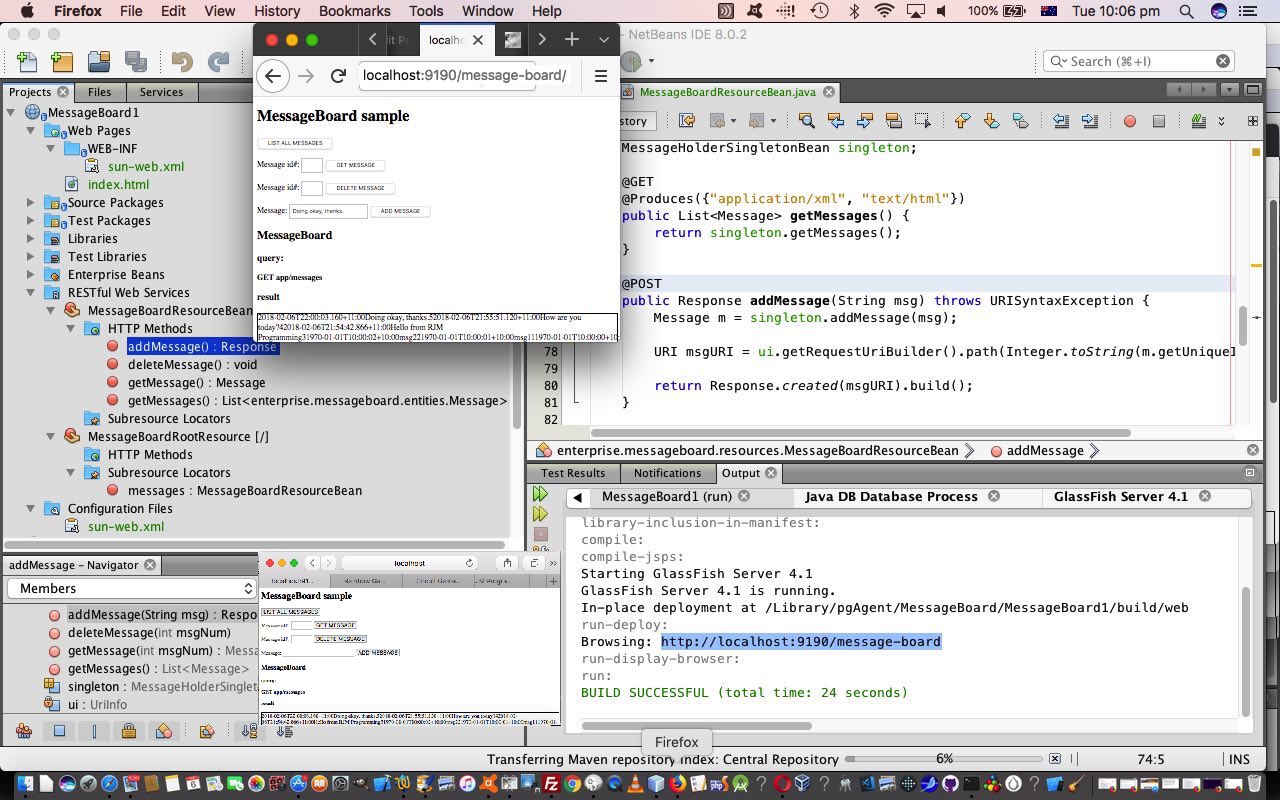

The “New Project” window will be displayed. After NetBeans is open, please select “File” -> “New Project”. Open NetBeans 7.1.1 by clicking in the NetBeans icon in your desktop or “All Programs” list. Failing to add this library will result in error messages when trying to run, for example, the test client (LqtRestTestClient.java). The Loqate Java library is available in the Loqate installation directory.
Netbeans rest web services install#
If the development will be done in a 64-bit server, it is recommended to install the 64-bit version of the Local API. If a different directory location has been used to install the Loqate Local API, then that installation path should be used when defining installation path variables in the sample code. It is also assumed that Loqate’s Global Knowledge Repository is installed in C:\Data1\data. It is assumed the user has installed the Local API in the directory C:\Data1.
Netbeans rest web services software#
The following software is required to complete this tutorial: 1 – Loqate Local API For developing this tutorial the Loqate Local API version used was 2012Q2.0. The same sample Java source code files needed to run this tutorial are available for download in the link below.ĭownload the Tutorial Source Code files here (zip) Requirements

Table 1: Sample Java Source Code for this Tutorial The Java packages as used in this tutorial are also listed in the same table. The source code can be seen by following the links shown in that table. Tutorial Java Source CodeĪll sample Java source code for this tutorial is summarized in Table 1 below.

A sample web service test client is also provided. The resulting web service response is in both XML and JSON format. The purpose of this tutorial is to help developers create an On-Premise REST Web Service using the Loqate Local API in Java. This tutorial is no longer supported and may include content that is incorrect or invalid.


 0 kommentar(er)
0 kommentar(er)
